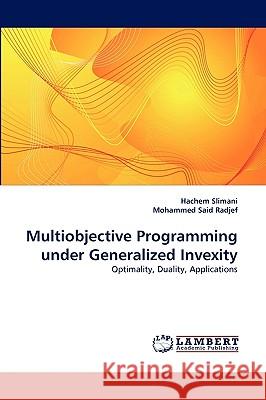Multiobjective Programming Under Generalized Invexity » książka
Multiobjective Programming Under Generalized Invexity
ISBN-13: 9783838373355 / Angielski / Miękka / 2010 / 152 str.
In the invex problems, it is required to consider a same function for the objective and constraint functions. Because of this restriction, various difficulties are encountered in applications related to optimality and duality properties. To improve this situation, in this work, the invexity with respect to different functions ( i) is proposed to study optimality conditions and duality for nonlinear and multiobjective programming problems with or without differentiability. Under this generalized invexity or its extensions assumptions, new Kuhn-Tucker (Fritz-John) type necessary and sufficient conditions and various duality results are obtained for (non)-differentiable nonlinear and multiobjective problems with inequality constraints. Furthermore, characterizations of solutions are established under suitable generalized invexity with respect to different ( i). Several examples are given to illustrate the obtained optimality results which generalize and extend previously known results in this area. The contents of this study should be accessible, usable and useful to students, researchers and practitioners in the areas of OR, optimization, applied mathematics, engineering, etc.
In the invex problems, it is required to consider a same function η for the objective and constraint functions. Because of this restriction, various difficulties are encountered in applications related to optimality and duality properties. To improve this situation, in this work, the invexity with respect to different functions (ηi) is proposed to study optimality conditions and duality for nonlinear and multiobjective programming problems with or without differentiability. Under this generalized invexity or its extensions assumptions, new Kuhn-Tucker (Fritz-John) type necessary and sufficient conditions and various duality results are obtained for (non)-differentiable nonlinear and multiobjective problems with inequality constraints. Furthermore, characterizations of solutions are established under suitable generalized invexity with respect to different (ηi). Several examples are given to illustrate the obtained optimality results which generalize and extend previously known results in this area. The contents of this study should be accessible, usable and useful to students, researchers and practitioners in the areas of OR, optimization, applied mathematics, engineering, etc.











